Advantage of Corigy Solar Hooks for Balcony

4. Our hooks can be stack compare with the round/square shape hooks on the market. Small volume of the components can greatly reduce the shipping cost.
Advantage of Corigy Solar Hooks for Balcony

4. Our hooks can be stack compare with the round/square shape hooks on the market. Small volume of the components can greatly reduce the shipping cost.
Corigy provides varies solutions of solar panel flat roof mounting brackets for different customer.
Solution 1:
This flat roof pv mounting systems can be connected on concrete blocks or use ballast tray to fix it.

Solution 2:
This flat roof solar racking is made of Zn-Al-Mg coating steel which has a nice performance on corrosion prevention.

Solution 3:
This flat roof mounts for solar panels adopt angle aluminum which is easy on installation
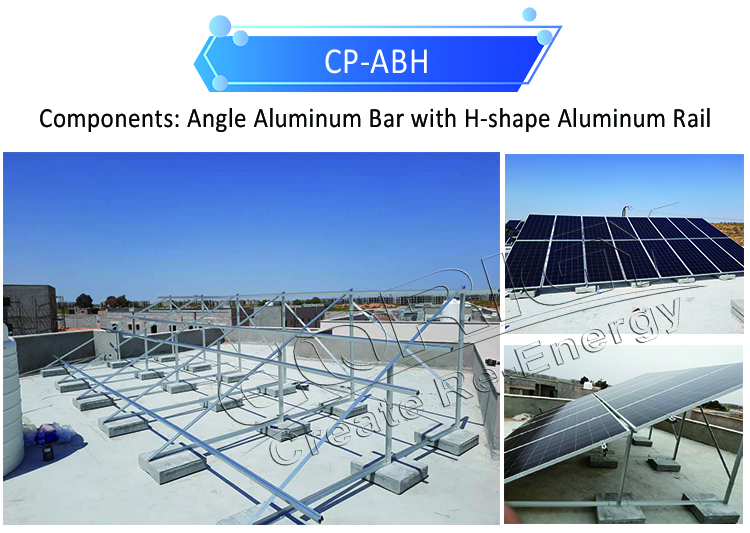
Solution 4:
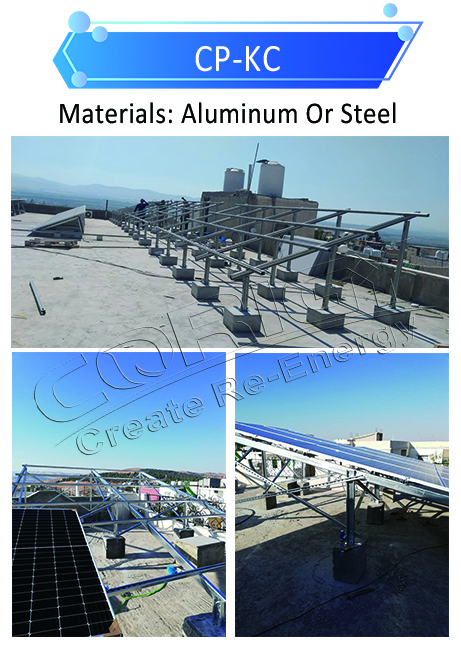
Corigy's solar panel tilt mount brackets only has few accessories (foot brackets, extension brackets, screws and rubber pads), which is very easy for install.
How to tilt your solar panels
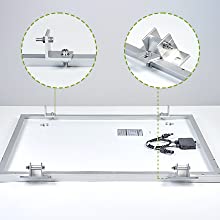
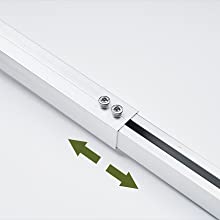
Step1: Install the foot brackets on your panel;
Step2: Adjust two extension brackets and screw them tightly;
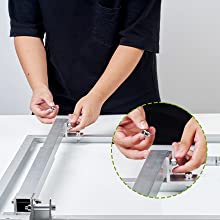
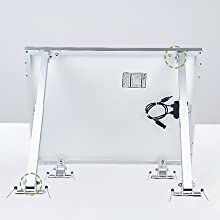
Step3: Install the extension brackets;
Step4: Use the rubber pads and screws to fix the solar panel;
Step5: Tile mounting brackets on the flat surface or roof.
The following video can help you understand how to install more intuitively
Advantage of solar panel tilt mount brackets
The main body of this solar panel tilt mount brackets is made of aluminum alloy, which is light and has good corrosion resistance. Fasteners are made of stainless steel, with precise hole positions, easy and fast installation. The solar panel is installed at an angle and is not flat and the angle is adjustable. Adjusting to different angles can satisfy customers to obtain the highest solar panel efficiency at different times. The stand can be folded for storage when not in use without taking up space.
The UK people have to face the impose 3-4 hours electricity cut off by national grid a day in following months, so this winter it is very tough for most citizens in UK due to high extra burden of energy bills. But solar energy has been estimated to be nine times cheaper than recent electricity prices, so build community solar energy system is a good way to trackle the fuel poverty and urgent energy demands.
In England, a village in Shropshire has raised £3.5million to acquire a solar farm that can power nearly 1,000 homes with clean energy. With the nation is having to spend twice as much as they were paying last year due to the soaring cost of gas foreign imports, any solution to alleviate the financial pressure will be welcomed.
Besides building solar farm in community, there are many other ways for households to self -rescue, some small energy storage systems are welcomed , For example, mounting solar system on pitched tiles roof with solar hooks or rack solar module on balcony to generate energy.
Corigy has more than ten years of experience in solar mounting system. Corigy can offer a wide range of solar accessories for installation on a variety of sites: pitched roofs, tin roofs, flat roofs, balconies, walls, car roofs, and portable triangular brackets for outdoor use.
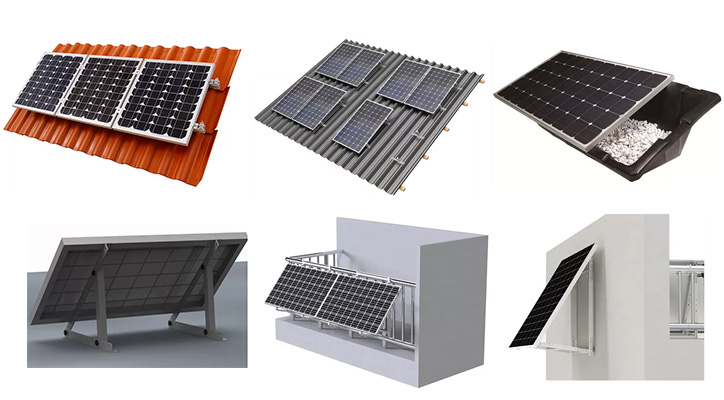
In the realm of commercial solar energy installations, the choice of the mounting system plays a pivotal role in the efficiency, durability, and overall success of the project. Among the various options available, Flat Roof Mounting Systems have gained significant popularity due to their numerous advantages. As a leading provider of solar installation solutions, Corigy is at the forefront of delivering high-quality Flat Roof Mounting Systems tailored to meet the specific needs of commercial buildings.
1. Maximized Space Utilization
Commercial buildings often have large, flat rooftops that provide ample space for solar panel installation. Flat Roof Mounting Systems allow businesses to maximize this space, ensuring that a greater number of panels can be installed. This leads to higher energy generation, enabling businesses to significantly reduce their energy costs and carbon footprint.
2. Ease of Installation
One of the key advantages of Flat Roof Mounting Systems is their ease of installation. These systems are designed to be user-friendly, reducing the time and labor costs associated with installation. Additionally, they can be installed without penetrating the roof membrane, preserving the integrity of the roof and minimizing the risk of leaks or damage.
3. Flexibility and Adaptability
Flat Roof Mounting Systems are highly flexible and can be adapted to various roof types and sizes. Whether the roof is large or small, Flat Roof Mounting Systems can be customized to meet the unique requirements of the building. This adaptability ensures that businesses can optimize their solar energy generation, regardless of their specific roof conditions.
4. Enhanced Durability and Longevity
The durability of a solar mounting system is crucial for the long-term success of a solar energy project. Flat Roof Mounting Systems from Corigy are built to withstand harsh weather conditions, including strong winds, heavy rain, and snow loads. This ensures that the solar panels remain securely in place, providing reliable energy generation for many years.
5. Cost-Effectiveness
Investing in Flat Roof Mounting Systems is a cost-effective solution for commercial buildings. The reduced installation time and minimal maintenance requirements contribute to lower overall project costs. Additionally, the increased energy efficiency achieved through optimal panel placement can lead to significant savings on energy bills over the lifetime of the system.
6. Improved Aesthetics
While functionality is paramount, the aesthetics of a commercial building cannot be overlooked. Flat Roof Mounting Systems offer a sleek and low-profile design that blends seamlessly with the building's architecture. This not only enhances the visual appeal of the building but also showcases the business’s commitment to sustainability.
Flat Roof Mounting Systems offer a range of benefits that make them an ideal choice for commercial buildings looking to harness solar energy. From maximizing space utilization to enhancing durability, these systems provide a comprehensive solution for businesses aiming to reduce their energy costs and environmental impact. As a trusted solar installation solutions provider, Corigy is dedicated to delivering high-quality Flat Roof Mounting Systems that meet the unique needs of commercial clients.
By choosing Corigy’s Flat Roof Mounting Systems, businesses can be confident in the efficiency, reliability, and long-term value of their solar energy investment.
Your solar power system requires the proper support system of solar panel mounting brackets. The solar panels cannot maintain steady performance and stay safe without brackets. Being a homeowner, contractor, or business owner looking into solar, you need proper bracket selection to make your setup successful.
Our information explains essential features of solar panel brackets plus available setups while guiding you to select an ideal system.

Solar panel mounting brackets connect solar panels to their installation areas, whether on rooftops, ground mounts, or poles for stability. Brackets support the solar panels by maintaining the proper angle position while they withstand wind force to secure your investment.
Good solar panel brackets improve system lifetime and boost its power generation performance. Poor hanging methods include putting solar panels in the wrong position and creating unreliable energy systems, plus expensive damage costs.
Every building and weather environment requires its own unique solar panel bracket setup. The ideal bracket choice depends on the kind of roof you have, combined with local weather conditions and your panel angle and funding options.
These solar panel installation brackets work best for home roofs with direct mounting to the building frame. Many people choose this option because they find the system affordable and it needs only a small area of land. Common types include:
Solar panels that need sunlight and space should instead be mounted on the ground. These allow for better cooling and easier maintenance.
Pole mounts elevate the panels to create free air flow between them and help users position them at any angle. These structures work well in power systems that run without city power or in remote areas.
Quality solar panels yield better results when installed appropriately.
Brackets that are made strong enough can protect panels against tough winds, snowy days and hot weather. Solar panel support systems need to be built to remain structurally strong throughout several decades of use.
The panel tilt angle significantly affects the system's energy production. Solar panel brackets let you set the right angle for receiving sunlight in all seasons.
Doubled solar panel brackets in improper installations create safety problems including, unhinged panels and roof leaking accidents. Top-quality brackets ensure no worries about your installation.
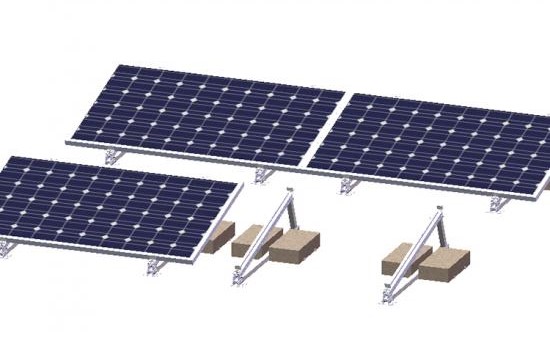
The buying process for solar mounting solutions easily overwhelms most customers. But here’s what really matters:
In your search for many different brand choices, you must carefully evaluate them. Focus on purchasing bracket systems with international test results that come with warranty protection.
During research, enter these specific search terms into your search engine.
People who enjoy home projects often build solar panels but choosing professional or DIY installation brings different benefits and disadvantages.
DIY Installation
The system includes all needed hardware and installation steps for someone who feels comfortable working on rooftops. Follow all required safe practices when doing this task.
Professional Installation
Professional services prevent solar panel bracket installation errors on the first try. Having experts install your brackets will protect you from problems that could arise later.
Contact an expert or visit trusted review sites to choose solar panel brackets that meet your needs effectively. You need to install the solar panels correctly to match panel selection efforts.
In this blog, we'll cover what makes solar panel mounting rails so important, how to choose the right ones, and why Corigy is the brand you can trust
When you are setting up a solar system, the solar panel mounting rails play a big role. They hold the solar panels steady. Without strong rails, panels can shift, loosen, or even fall. That's why choosing the right rails is just as important as picking the right solar panels.
Corigy is a trusted name in solar solutions. They offer top-quality solar panel mounting rails. Plus they make installation easy, safe, and reliable.
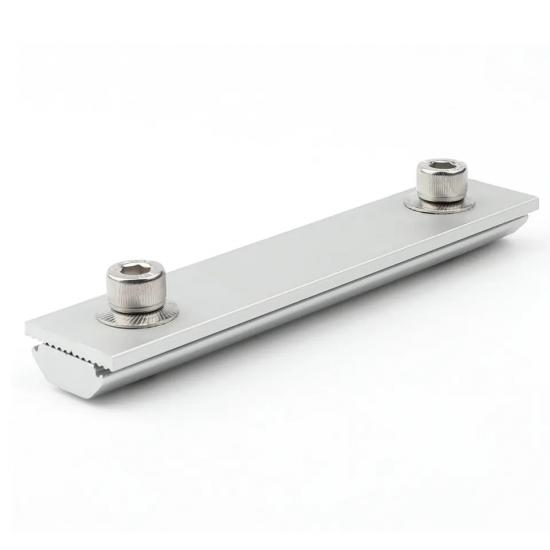
Picking the right solar mounting rails makes all the difference. Here's why Corigy stands out:
These rails are built to last for years, giving peace of mind and steady power from your solar panels
The solar rail mounts function as components which join solar panels to mounting rails. Solar rail mounts secure solar panels against heavy winds and rainy conditions due to their mounting capabilities. Corigy provides solar rail mounts which users can conveniently install and modify. The solar panels can be adjusted perfectly for maximum sun exposure by proper alignment
At Corigy, you can find many kinds of rail mounts. Some popular options include:

Here's why adding strong rails to your solar setup is smart:
Why Trust Corigy?
Corigy has years of experience in solar mounting solutions. Their products are trusted around the world for quality and value. Through Corigy, you are choosing:
Conclusion
Choosing the right solar panel mounting rails is key to building a strong, safe solar system. Corigy offers the perfect solution with strong materials, smart designs, and great prices. If you want a solar setup that stands the test of time, Corigy's mounting rails are your best bet.
Start your solar journey with Corigy Solar Mounting Rails today!
In electric vehicle (EV) infrastructure, not all connectors are built the same, especially when harsh environments are involved. From coastal areas with salt-laden air to outdoor depots exposed to extreme temperatures, the EV charging connector you choose needs to deliver more than basic functionality. It must offer long-term durability, safe thermal performance, and weather resistance you can trust.
At Workersbee, we understand these challenges. That's why our DC charging connector (200A), built to the European standard DC 2.0, is rigorously tested to prove it can withstand the harshest real-world conditions. Let's break down what makes a connector truly “harsh-environment ready,” and how our lab test data backs it up.
Why Harsh Environments Require More from Your EV Connector?
What qualifies as a “harsh environment” in EV charging?
Temperature extremes: Think outdoor installations in regions with -40°C winters or scorching 85°C summers.
High humidity or rain exposure: Especially in subtropical or rainy regions.
Saltwater exposure: Common in ports, coastal zones, and marine logistics areas.
Heavy-duty usage: Public chargers or fleet applications that involve repeated plug-in/out actions.
Without the right design and materials, standard connectors may overheat, corrode, or wear out quickly in these environments—leading to downtime, increased maintenance, or even safety risks.
What to Look for in a Reliable DC Charging Connector?
1. Durability Through Repeated Use
A connector designed for tough conditions should go far beyond the minimum plug cycle rating. The Workersbee DC charging Plug (200A) was tested to 30,000 plug-in/pull-out cycles—triple the expected life of many standard products. It maintained stable contact performance throughout, proving it's ready for high-volume public or industrial applications.
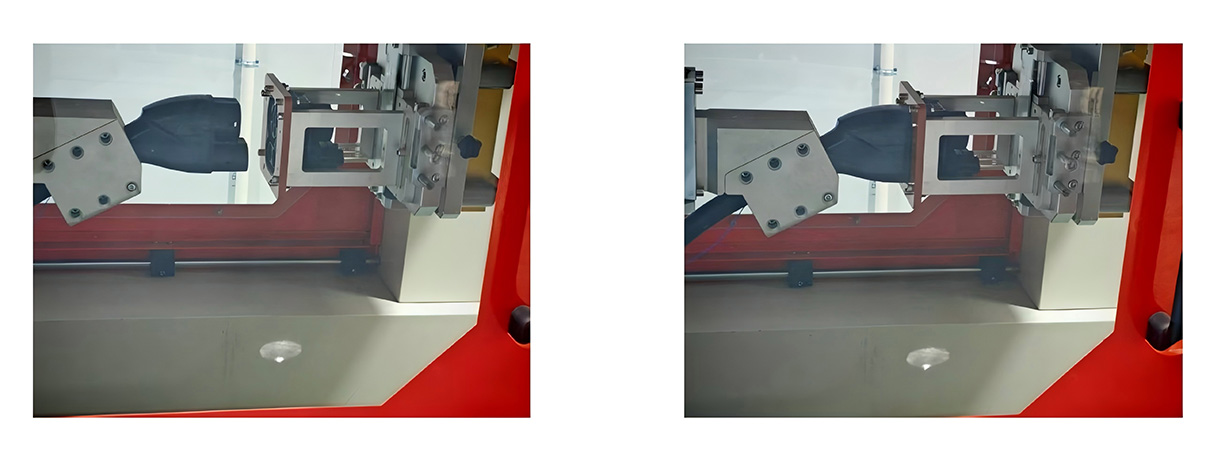
2. Certified Thermal Performance
When charging at high currents like 200A, heat management becomes a safety concern. That's why temperature rise testing for EV chargers is crucial. In our test, the connector maintained a maximum temperature rise of just 41.8K, well below the 50K safety threshold. This means our product ensures stable, safe operation—even during prolonged fast-charging sessions.
3. Resistance to Moisture, Humidity, and Salt
One of the standout features of the Workersbee connector is its saltwater-resistant charging plug design. In lab tests, we immersed the connector in a mud and saltwater solution, followed by 24-hour powered operation in alternating damp-heat conditions (95% humidity, -40°C to 85°C). The connector passed with zero failures.
4. Outdoor-Ready IP Rating
Our product is an IP-rated DC charging connector built to resist water and dust intrusion. This is essential for long-term outdoor installations, especially where water exposure is frequent.
5. Compliance with Industry Standards
Built to the European standard DC 2.0 connector specification, the Workersbee DC charging gun ensures compatibility with modern charging infrastructure and meets current safety benchmarks for high-current EV connectors.
What Makes Workersbee's Connector Stand Out
In 2025, Workersbee conducted an in-depth durability and environmental performance test through a third-party lab. Here's what was tested:
|
Test Item |
Details |
|
Plug-in/out cycles |
30,000 cycles using a mechanical rig |
|
Environmental stress |
Mud and saltwater immersion every 6,000 cycles |
|
Humidity/temperature test |
24-hour alternating cycles at -40°C to 85°C, 95% humidity |
|
Temperature rise check |
Post-cycle thermal tests under full current |
|
Result |
Passed all tests. Max temperature rise: 41.8K |
These results prove that Workersbee's durable EV charging solution isn't just compliant—it's reliable where it matters most: in the field.
Why It Matters for Infrastructure Operators and OEMs?
If you're sourcing EV components for industrial, public, or large-scale deployments, choosing connectors based on specs alone isn't enough. You need proof of real-world resilience.
Here's why the right connector impacts your business:
Lower maintenance costs: Durable products reduce failure rates and service interruptions.
Improved safety: Stable thermal performance in EV chargers means reduced risk of overheating.
More uptime: Especially in logistics or public networks, reliability is crucial.
Better ROI: Longer product life = better return on infrastructure investment.
1. What is a temperature rise test for EV chargers, and why is it important?
The temperature rise test measures how much heat builds up at critical contact points—like the terminals—of an EV charging connector during normal operation under load. In the case of high-current DC charging (like 200A), even minor resistance in the contacts can generate heat.
Too much heat not only shortens the life of the connector but also poses a serious safety risk to the vehicle and the charging system. According to safety standards, a temperature rise of less than 50K is considered acceptable.
In Workersbee's independent test report, our DC charging gun 200A reached a maximum temperature rise of 41.8K, even after 30,000 cycles and damp-heat exposure—well within safe limits. This means stable, long-term thermal performance you can count on, even in demanding installations.
2. Can this connector be used in coastal or high-humidity areas?
Yes—and it's specifically designed for that. Coastal regions introduce a high risk of salt corrosion, which can degrade unprotected components and lead to failures over time.
Workersbee's saltwater resistant charging plug was subjected to:
Mud/saltwater immersion tests
24-hour alternating damp-heat cycles under live current
Mechanical wear testing after environmental exposure
These extreme conditions simulate real-world use in ports, marinas, island facilities, or humid industrial zones. The connector passed all tests without damage, leakage, or electrical failure.
If you're installing EV chargers in salt-prone or moisture-heavy areas, this connector is a reliable choice to reduce maintenance costs and extend equipment lifespan.
3. What makes a connector “IP-rated,” and why does that matter?
An IP (Ingress Protection) rating defines how well a connector is sealed against solid objects (like dust) and liquids (like rain or splashes). For EV infrastructure, this is especially important for outdoor or semi-sheltered installations.
IP54/IP55: Protection against dust and splashing water (basic outdoor use)
IP65/IP67: High protection against dust and water jets or temporary immersion (ideal for harsh weather)
Workersbee's IP-rated DC charging connectors are sealed to resist dust, rain, and high-humidity exposure, ensuring long-term reliability even when installed in parking lots, warehouses, or roadside charging points without full enclosures.
4. How many plug cycles should a DC connector be rated for in B2B applications?
In B2B use cases—especially in fleet operations, bus depots, or public stations—connectors undergo thousands of cycles each year. A connector rated for only 10,000 cycles may fail within a few years, leading to costly replacements and downtime.
Workersbee's 200A charging gun is rated for and tested beyond 30,000 plug-in/pull-out cycles, verified by a third-party lab. This level of durability ensures it can support daily high-frequency usage for many years with consistent performance.
For example:
10 plug cycles/day x 365 days = ~3,650/year
30,000 cycles = 8+ years of reliable operation
This kind of durability helps optimize long-term ROI for infrastructure operators.
5. What is the European standard DC 2.0 connector, and why is it important for compatibility?
The European standard DC 2.0 is a specification designed to bring consistency, safety, and scalability to DC fast-charging equipment across the EU and global markets. It includes enhancements such as:
Higher current capacity support (up to 200A or more)
Improved sealing and insulation
Enhanced mechanical durability
Greater interoperability with major EV platforms
Workersbee's connector is fully compliant with the DC 2.0 standard, meaning it's ready for integration into modern EV charging networks. This makes it easier for OEMs, infrastructure developers, and charging service providers to meet regulatory standards and ensure vehicle compatibility across Europe and beyond.
Garden solar street lamps are lighting fixtures designed for outdoor places such as gardens and courtyards, with the following features and advantages:

Energy saving and environmental protection: Using solar energy as energy, not consuming traditional electricity, reducing environmental pollution and energy consumption. Sunlight is converted into electrical energy through solar panels and stored in rechargeable batteries for nighttime lighting.
Easy installation: No need to lay complicated cable lines, just install the street light in the appropriate position to ensure that the solar panel can fully receive sunlight. Usually adopts integrated design or simple assembly method, which is convenient for users to install by themselves.
Intelligent control: Generally equipped with light control sensors, street lights can be automatically turned on and off according to the ambient light intensity. Some high-end products may also be equipped with human body sensing function. When someone approaches, the brightness will automatically increase, and when the person leaves, the brightness will decrease or turn off, realizing intelligent energy-saving lighting.

Safe and reliable: It uses low-voltage DC power supply, which is safer than the high-voltage AC power used in traditional street lamps and reduces the risk of electric shock. At the same time, the components of solar street lights are specially designed and processed, with excellent waterproof, lightning protection, and anti-corrosion properties, and can adapt to various outdoor environments to ensure long-term stable operation.
Beautiful and diverse: The appearance design of garden solar street lamps is rich and diverse, including simple modern, European classical, and country style, among others. You can choose according to the overall style of the garden and your personal preferences. They not only provide lighting functions but also serve as garden decorations, enhancing the garden's aesthetic appeal.
When installing garden solar street lamps, it is necessary to choose an installation location with abundant sunlight to ensure that the solar panels can fully receive sunlight. At the same time, the number and height of garden solar street lamp to be installed should be determined based on the lighting requirements and the layout of the garden, and they should be installed and debugged correctly in accordance with the instructions.
Our street lamp product services
Product quality guarantee: We promise that the product quality complies with relevant standards and regulations. Under normal usage conditions, a certain number of years of quality guarantee period will be enjoyed from the date of purchase. During the warranty period, for faults or damages caused by product quality issues, free repair or replacement services will be provided.
Installation guidance and technical support: Provide detailed installation guidance. If necessary, professional technicians can be dispatched for on-site installation guidance. We offer round-the-clock technical support. Customers can contact the after-sales service team through multiple channels for assistance.
Maintenance and repair service: During the warranty period, if the product malfunctions or gets damaged, the after-sales service team will respond promptly and arrange for on-site repair. Beyond the warranty period, we will continue to provide maintenance services and charge reasonable fees based on the actual fault conditions. Regularly arrange inspections to maintain and service the street lamps.
Accessory supply and replacement: We always keep various accessories in stock to ensure that customers can obtain the required parts in a timely manner and guarantee the normal operation of street lamps. During the warranty period, if the parts are damaged due to product quality issues, free replacement services will be provided.
Training services: We offer training on the installation, operation and maintenance of solar street lamps to ensure that customers can use and maintain the products correctly and extend their service life.
Personalized service: Based on customer needs, we provide personalized after-sales service plans to offer the greatest convenience and satisfaction to customers.
Quick response: We promise to respond within a certain period of time after receiving the customer's repair application and arrange maintenance personnel to rush to the site as soon as possible.
Solar panels work through the photovoltaic effect, which converts sunlight into electricity. Each solar panel is made up of multiple photovoltaic cells, typically composed of semiconductor materials like silicon. When sunlight hits these materials, photons excite electrons, creating an electrical current. This current is then transmitted through wires to power batteries or other devices, providing energy for homes or industries.
By converting solar energy into clean electricity, solar panels not only save on electricity bills but also reduce carbon emissions, making them an effective solution to the global energy crisis and climate change.
Environmental Benefits of Solar Panels
The use of solar panels is not only economically beneficial but also has a profound positive impact on the environment. First, solar energy is a renewable resource—abundant and inexhaustible—and its use does not produce any pollutants or greenhouse gas emissions. Thus, widespread adoption of solar panels helps reduce reliance on fossil fuels, effectively mitigating air pollution and slowing global warming.
Additionally, the manufacturing and lifespan of solar panels are continually being optimized. Modern solar panels are produced in increasingly eco-friendly ways, and recycling technologies are advancing, ensuring that their environmental footprint is minimized.
Evolution of Solar Photovoltaic Efficiency and Its Bright Future
Solar photovoltaic efficiency has been steadily improving over the years, with advancements in photovoltaic materials and cell design. From the initial efficiency of 5-6%, to the current standard of 15-20%, technological advancements have made solar power more economically viable and practical.
Particularly, N-Type Bifacial Solar Panel utilize both sides of the panel to absorb sunlight, improving efficiency. This technology is making solar panels more adaptable in various environments, and as technology progresses, the future of solar energy systems looks brighter.
The Importance of Solar Panel Maintenance and Repair
Although solar panels are highly durable, regular maintenance and repairs are essential for their long-term performance. While solar panels typically last for over 20 years, improper cleaning or lack of inspection can lead to reduced efficiency. Common maintenance tasks include:
Regularly cleaning the surface of solar panels to remove dust, dirt, and debris, ensuring they absorb as much sunlight as possible.
Checking the connections of the panels to ensure proper electrical flow.
Periodically inspecting the inverter and other system components to ensure smooth operation.
Timely repairs can extend the lifespan of the system and maintain its efficiency.
3 Best Places for Your Solar Panel Installation
The location of solar panel installation plays a crucial role in their efficiency. Different installation environments can impact the performance of solar panels. Here are the three best places for solar panel installation:
Roof: The roof is the most common and ideal location for installation. Most homes provide enough space for solar panels, and roofs are often unobstructed, receiving maximum sunlight.
Solar Carports: Solar carports are another excellent installation option. Solar panels installed on carports not only provide electricity for the home but also charge electric vehicles.
Open Land: For homes or buildings without suitable rooftops, open land can serve as an ideal space for solar panel installation. Large-scale solar farms can convert vast areas of land into electricity, meeting substantial energy demands.
What Are The Main Advantages of Solar Panels?
Solar panels offer numerous notable benefits, especially in the following areas:
Environmentally Friendly: Solar energy is clean and reduces the release of greenhouse gases, which helps decrease air pollution.
Sustainability: Solar energy is a renewable resource, making it a long-term energy solution.
Cost Savings: Installing solar panels reduces reliance on traditional energy sources, significantly lowering electricity bills in the long run.
Energy Independence: Solar panels allow homeowners and businesses to become less dependent on the external power grid, enhancing energy independence.
Choosing the right solar panel system not only boosts energy efficiency but also offers long-term economic returns.
N-Type Solar Panels: The Future of Solar Energy
For those seeking efficient, durable, and environmentally friendly solar panels, Full Black N-Type Solar Panel Company offers excellent N-type all-black solar panels. Compared to traditional P-type solar cells, N-type panels offer superior efficiency, durability, and low-temperature performance. Furthermore, N-type bifacial solar panels (N Type Bifacial Solar Panel Manufacturer) capture sunlight from both sides, increasing power generation efficiency, making them a key development in the future of solar energy.
If you’re looking for bulk purchasing, wholesale All black Solar Panels provides high-quality, competitively priced solar panels, making your solar energy project more economical and sustainable.